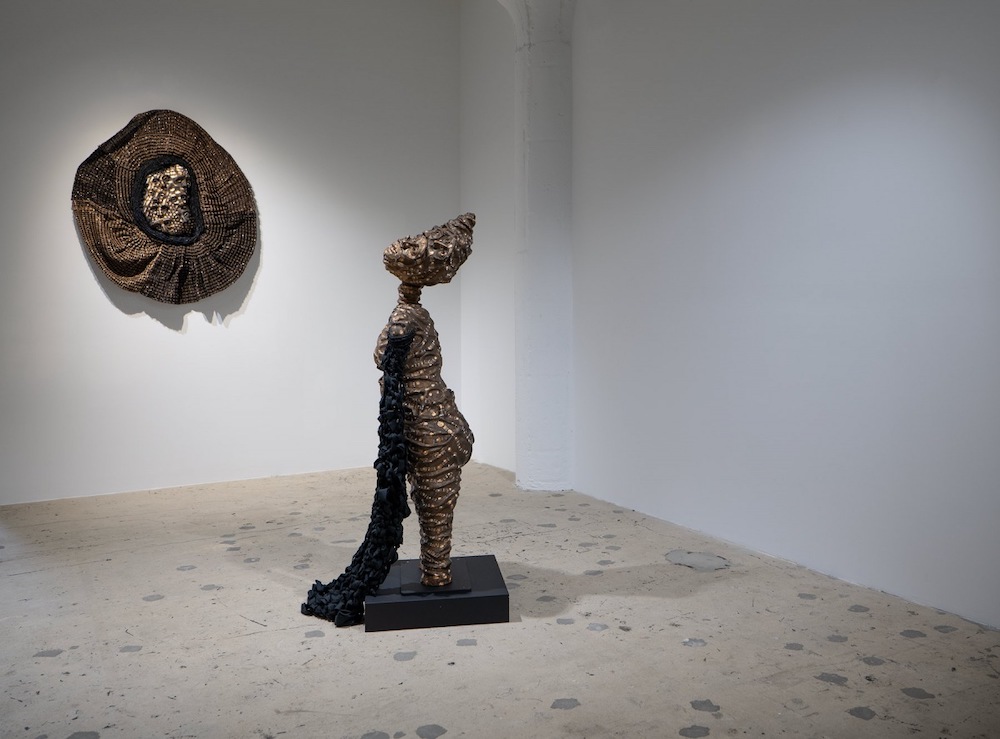Amalia Galdona Broche and Demetri Broxton’s recent Los Angeles debuts at Patricia Sweetow Gallery are nothing less than startling, sensorial revelations. Moving through the exhibition of these intimately personal works, it’s hard to catch one’s breath. Both bodies of works, rooted in conceptual material practices, explore meditations on diasporas, racial histories and what is lost and what is gained in the passage to acculturation—it’s a heady and emotional maximalist mélange.
Galdona Broche is a multidisciplinary artist working in sculpture and installation media. Her series, “Vestments of Time”—bronze-like sculptures and wall hangings – are achingly commanding. Composed with resin, paper, plaster, and textiles, she employs numerous techniques such as knotting, weaving, tearing, and written coding. The works anthropomorphize her lived experience—equal parts Cuban and American – personifying the angst and trauma endemic in a conflicted state. The surreal chameleon-like membranes seem an allusion to a transcultural struggle morphing into figurative angst—an architecture of pain and promise. Is there an endpoint to this transformation? Perhaps that is less the question than the journey to reconcilement.
Broxton’s mixed media works are an arresting tour de force of form and unexpected beauty—the intricate, embellished boxing glove sculptures and robes appear at odds with his choice of unrelated and seemingly counterintuitive materials – yet the results are far more than the sum of their parts. Broxton takes inspiration from African beading traditions, hip hop and graffiti and, using Everlast boxing gloves as a base, intricately embellishes them with pearls, seeds, shells, shredded denim, steel wire, felt, and herbs. The sport has a particular resonance with Broxton, his grandfather a fighter at a time when being in a ring with a white man was sanctioned—without fear of dire consequences. A single such glove, Catch A Fire (2021) is inspired by the Sonia Sanchez poem of the same name, exhorting African Americans to pass on their historical “fire” to the next generation. Overlayed with a litany of Japanese and Czech seed beads, feathers, quartz, tourmaline, and brass wire – it fairly leaps from the wall with urgency. It’s fiercely tactile and enticing, belying the underlying narrative. A new work, Break My Soul (2023)—a reference to Beyoncé’s song, shifts the source material to traditional robes referencing Nigerian ceremonial objects, which he then ritualistically embellishes utilizing wool, glass beads, and other materials transforming them into enigmatic cultural vessels. Broxton extends his world view in the same way artist Cherice Harrison-Nelson uses West African dress traditions to highlight social issues.
The artists are a well-suited paring, though a bit more breathing room would help the visitor more easily assimilate the totality of their vision. But that’s a minor distraction—ultimately, the show is an arresting vision of personal and social montages, ecstatic revelations, and mastery of material practices.


